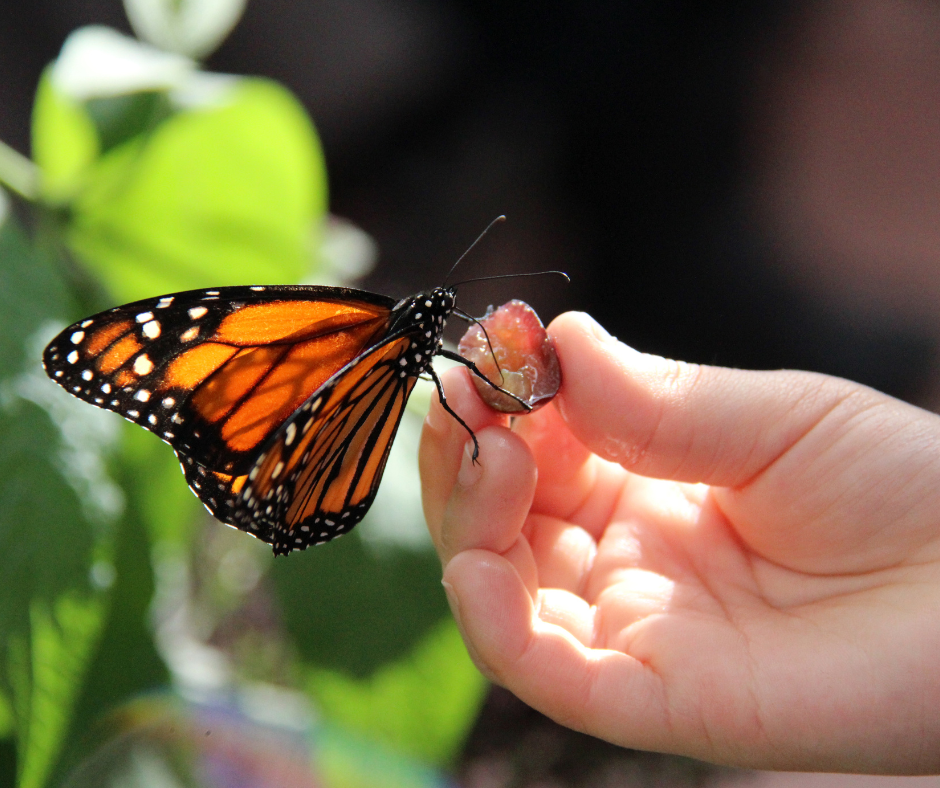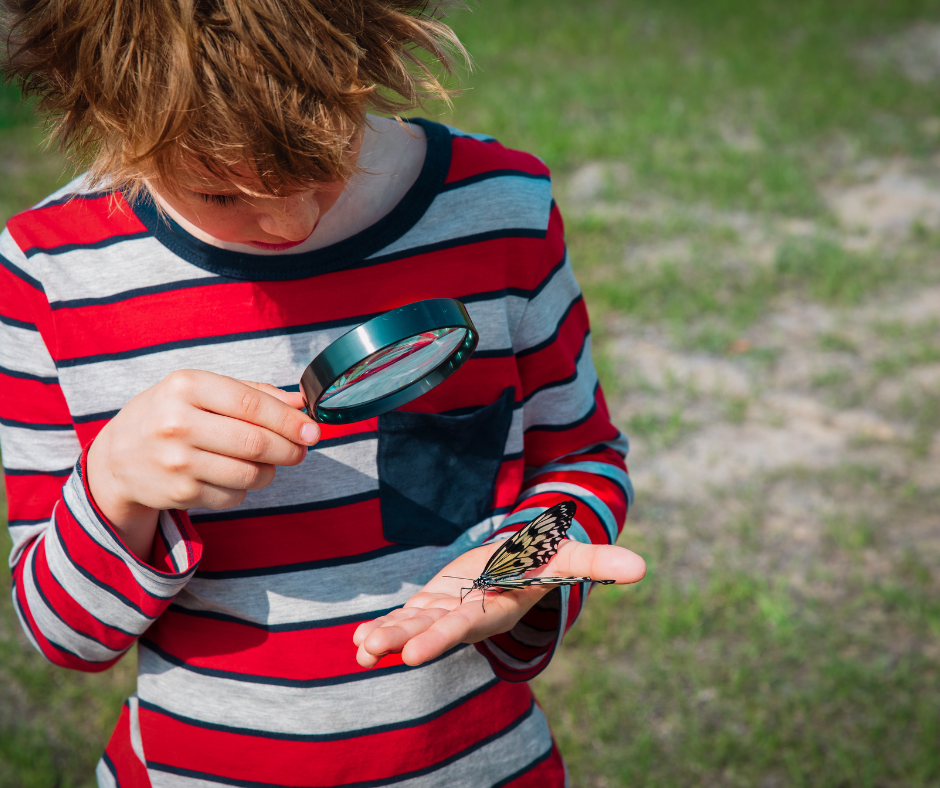Butterflies Lesson Plan
Do you remember the first time a fluttering butterfly caught your eye? As educators, we must introduce these magical moments to our young learners. Our Butterflies Lesson Plan is specifically designed to do just that!
This lesson plan is filled with engaging butterfly activities for preschoolers. These activities not only pique their interest in the natural world but allow them to understand the life cycle of these colorful creatures.
With our guided approach, teaching about butterflies becomes an immersive, educational, and fun experience for both teachers and students.

Objectives
Our primary goal for this butterfly unit is to create an enriching and comprehensive learning experience for preschoolers. This unit will enable students to grasp the basic life cycle of a butterfly, understanding its transformation from a mere egg to an enchanting butterfly.
We also aim to familiarize them with the basic anatomy of these insects, such as their wings, antennae, and body, and help them distinguish butterflies from other insects, particularly moths. Observational skills will be honed as students watch caterpillars and butterflies in their natural habitats, fostering an appreciation for the beauty and diversity of butterflies in nature.
Through butterfly-rearing activities, students will also develop a sense of responsibility and empathy. Participating in butterfly crafts and art projects will enhance their fine motor skills. Ultimately, we hope to ignite a lifelong love and respect for nature and biodiversity in our young learners.
This comprehensive learning journey will ensure that they carry these essential skills and values forward in their educational journey and beyond.

Materials Needed
For the successful execution of our Butterfly Lesson Plan, you will need the following materials:
Books about Butterflies: These should include detailed illustrations and easy-to-understand information about the life cycle of butterflies. Recommended titles include The Very Hungry Caterpillar by Eric Carle and From Caterpillar to Butterfly by Deborah Heiligman.
Butterfly Life Cycle Kit: This will provide a real-life demonstration of the transformation process.
Pictures of different butterflies: These will help students recognize the diverse species of butterflies and distinguish them from moths.
Craft Materials: Colored paper, glue, scissors, and markers for butterfly art projects.
Real-life butterfly samples: If possible, preserved butterfly specimens can offer a hands-on learning experience.
Butterfly habitat: If permissible and practical, an observation of butterflies in an actual garden or a butterfly sanctuary could prove to be a memorable experience.
Remember, preparing these materials in advance will ensure a smooth, engaging, and memorable learning experience for your students, capturing the wonder of butterflies in all its vibrant detail.
Butterfly Lesson Plan
Let’s delve into our detailed, step-by-step Butterfly Lesson Plan. This guide outlines every stage of the teaching process, from the initial introduction to the fascinating world of butterflies to hands-on activities designed to reinforce learning and foster a deeper understanding and appreciation for these winged wonders.
Each activity is carefully crafted to engage young learners and stimulate their natural curiosity about the magic nature holds.
Day 1: Introduction to Butterflies
On the first day, we embark on our exciting journey by introducing our young learners to the enchanting world of butterflies.
We delve into the basic anatomy of these beautiful insects, familiarizing the students with their wings, antennae, and body.
We also take our first look at the fascinating life cycle of a butterfly, tracing its journey from an egg to a captivating butterfly.
Don’t miss these:
Day 2: Butterfly Life Cycle Activity
Day 2 is dedicated to a fun-filled, hands-on activity where students will visually re-create the life cycle of a butterfly using craft materials. This activity allows students to reinforce their understanding of the metamorphosis process.
Don’t miss these:
Day 3: Butterfly Species and Their Characteristics
On the third day, we dive into the diverse universe of butterfly species. Using pictures and real-life butterfly samples, the students will explore the characteristics of different butterfly species and learn to distinguish them from other insects, particularly moths.
Day 4: Butterfly and Their Environments
Day 4 sees our young learners exploring the habitats of butterflies. They will understand how butterflies adapt to their environments and the crucial role they play in the ecosystem. If possible, a field trip to a local butterfly sanctuary or garden will provide a memorable, immersive experience.
Day 5: Creating Butterfly Artwork
On the final day, the students will channel their creative energies into crafting beautiful butterfly artwork. This activity not only allows them to express their creativity but also enhances their fine motor skills.
As they create their masterpieces, they will reflect on everything they’ve learned about butterflies, culminating their week-long journey in a vibrant celebration of these wonderful creatures.
Don’t miss these:

Activities and Games
To make our Butterfly Lesson Plan even more engaging and enjoyable, we have included a variety of activities and games. These fun and educational exercises are designed to reinforce the concepts learned, stimulate curiosity, and foster a deeper understanding of butterflies and their life cycle. They also aim to improve fine motor skills and encourage artistic expression among our young learners. So, let’s dive into these exciting activities and games!
Butterfly Bingo
This game enhances recognition skills as students find images of butterflies and their life cycles on their bingo cards. Create bingo cards featuring images of different stages of a butterfly’s life cycle, various species of butterflies, and other related items such as flowers and caterpillars. Call out the items randomly and the first student to complete a row or column wins.
Butterfly Life Cycle Role Play
This role-playing game will give students a fun and interactive way to deeply understand the transformation process. Assign each student a stage of the butterfly’s life cycle (egg, caterpillar, cocoon, butterfly), and let them act it out. This activity not only reinforces the metamorphosis concept but also encourages teamwork and creativity.
Butterfly Matching Game
This activity involves matching cards with pictures of different butterfly species to their corresponding names. It will help students familiarize themselves with the diversity of butterflies and enhance memory and concentration skills.
Butterfly Dance
A lively and fun way to conclude the lessons could be a butterfly dance. With their handmade butterfly wings, the students can flutter around like butterflies. This physical activity can help children internalize the freedom and beauty of butterflies while also serving as a fun and energetic break.
These games and activities, designed to be interactive, engaging, and educational, will help students deepen their understanding of butterflies and their life cycle. They also foster valuable skills such as teamwork, creativity, and fine motor skills, making learning about butterflies a fun and enriching experience.
Evaluation Strategies
Effective evaluation is key to understanding the absorption of the information taught in this butterfly unit. The following are methods to assess preschoolers’ comprehension of the lessons:
1. Observation: Teachers can observe students during lessons and activities to gauge their understanding. Look out for their ability to follow instructions, engage in discussions, and actively participate in activities.
2. Oral Quizzes: Use simple, age-appropriate questions to test the student’s knowledge about butterflies, their lifecycle, anatomy, and different species. For instance, you might ask, “Can you tell me what happens when a caterpillar goes into a cocoon?”
3. Artwork Analysis: Assess the students’ butterfly artwork. Look for an accurate representation of butterflies, indicating an understanding of their anatomy.
4. Activity Performance: Evaluate the output of hands-on activities like the butterfly lifecycle activity and butterfly matching game. Successful completion of these tasks indicates comprehension of the lessons.
5. Role Play Review: During the lifecycle role play, assess each student’s ability to enact their assigned lifecycle stage accurately.
Remember, the goal of these evaluations is to assess understanding, not to grade the students. The aim is to determine what parts of the lesson were well-understood and which aspects may need revisiting in future lessons. This evaluation will help ensure that the students have fully grasped the wonderful world of butterflies.

Extension Activities
As part of our comprehensive approach to learning, we’ve devised several extension activities. These are designed to solidify the concepts learned during the butterfly unit and to encourage continuous exploration of the topic outside of the classroom.
These additional activities not only prolong the students’ engagement with the subject matter but also provide opportunities for them to apply their knowledge in new contexts. Let’s explore these enriching extension activities.
Butterfly Hunt
Parents can take children on a ‘Butterfly Hunt‘ in a local park or garden. Children can spot different types of butterflies and try to identify them. This will be an exciting way to apply what they have learned in a real-world context.
Butterfly Story Time
Read children’s stories or show them videos related to butterflies. This will not only entertain them but will also enhance their understanding of butterflies.
Butterfly Puzzle
Provide children with butterfly-themed puzzles. This will help improve their problem-solving skills while reinforcing their knowledge about different types of butterflies.
Butterfly Coloring Sheets
Give children butterfly-themed coloring sheets. This will help enhance their fine motor skills, stimulate their creativity, and reinforce their knowledge about the anatomy of butterflies.
Don’t miss these:
These extension activities are aimed at deepening students’ understanding of butterflies. They provide opportunities for students to apply what they have learned in different contexts, thereby promoting long-term retention of the lessons learned.

The butterfly unit provides an excellent opportunity to introduce preschoolers to the wonders of nature. Through engaging activities, children can gain a comprehensive understanding of butterflies, their lifecycle, and their role in our ecosystem.
By providing diverse learning experiences through games, hands-on activities, and extension tasks, we aim to foster lifelong curiosity and learning about these delicate creatures.













thank you